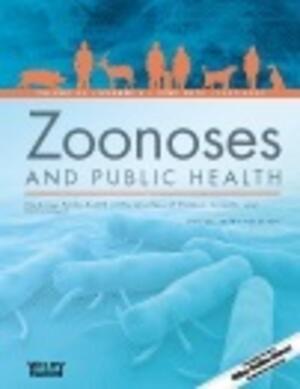
Performance of clinical signs and symptoms, rapid and reference laboratory diagnostic tests for diagnosis of human African trypanosomiasis by passive screening in Guinea: a prospective diagnostic accuracy study
Abstract
Background
Passive diagnosis of human African trypanosomiasis (HAT) at the health facility level is a major component of HAT control in Guinea. We examined which clinical signs and symptoms are associated with HAT, and assessed the performance of selected clinical presentations, of rapid diagnostic tests (RDT), and of reference laboratory tests on dried blood spots (DBS) for diagnosing HAT in Guinea.
Method
The study took place in 14 health facilities in Guinea, where 2345 clinical suspects were tested with RDTs (HAT Sero-K-Set, rHAT Sero-Strip, and SD Bioline HAT). Seropositives underwent parasitological examination (reference test) to confirm HAT and their DBS were tested in indirect enzyme-linked immunoassay (ELISA)/Trypanosoma brucei gambiense, trypanolysis, Loopamp Trypanosoma brucei Detection kit (LAMP) and m18S quantitative PCR (qPCR). Multivariable regression analysis assessed association of clinical presentation with HAT. Sensitivity, specificity, positive and negative predictive values of key clinical presentations, of the RDTs and of the DBS tests for HAT diagnosis were determined.
Results
The HAT prevalence, as confirmed parasitologically, was 2.0% (48/2345, 95% CI: 1.5–2.7%). Odds ratios (OR) for HAT were increased for participants with swollen lymph nodes (OR = 96.7, 95% CI: 20.7–452.0), important weight loss (OR = 20.4, 95% CI: 7.05–58.9), severe itching (OR = 45.9, 95% CI: 7.3–288.7) or motor disorders (OR = 4.5, 95% CI: 0.89–22.5). Presence of at least one of these clinical presentations was 75.6% (95% CI: 73.8–77.4%) specific and 97.9% (95% CI: 88.9–99.9%) sensitive for HAT. HAT Sero-K-Set, rHAT Sero-Strip, and SD Bioline HAT were respectively 97.5% (95% CI: 96.8–98.1%), 99.4% (95% CI: 99.0–99.7%) and 97.9% (95% CI: 97.2–98.4%) specific, and 100% (95% CI: 92.5–100.0%), 59.6% (95% CI: 44.3–73.3%) and 93.8% (95% CI: 82.8–98.7%) sensitive for HAT. The RDT’s positive and negative predictive values ranged from 45.2–66.7% and 99.2–100% respectively. All DBS tests had specificities ≥ 92.9%. While LAMP and m18S qPCR sensitivities were below 50%, trypanolysis and ELISA/T.b. gambiense had sensitivities of 85.3% (95% CI: 68.9–95.0%) and 67.6% (95% CI: 49.5–82.6%).
Conclusions
Presence of swollen lymph nodes, important weight loss, severe itching or motor disorders are simple but accurate clinical criteria for HAT referral in HAT endemic areas in Guinea. Diagnostic performances of HAT Sero-K-Set and SD Bioline HAT are sufficient for referring positives to microscopy. Trypanolysis on DBS may discriminate HAT patients from false RDT positives.
Citation
Camara, O., Camara, M., Falzon, L.C., Ilboudo, H., Kaboré, J., Compaoré, C.F.A., Fèvre, E.M., Büscher, P., Bucheton, B. and Lejon, V. 2023. Performance of clinical signs and symptoms, rapid and reference laboratory diagnostic tests for diagnosis of human African trypanosomiasis by passive screening in Guinea: a prospective diagnostic accuracy study. Infectious Diseases of Poverty 12: 22.










